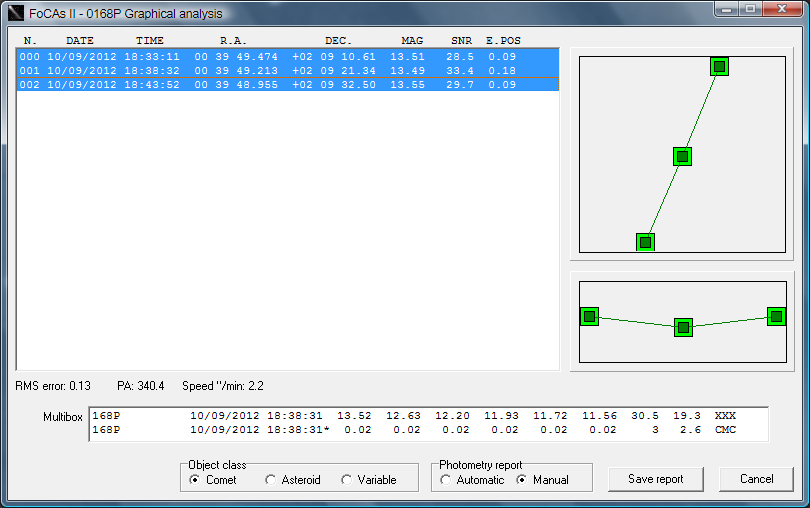|
|
| Mouse-over to browse the image in 4-colore sequels version with L-S filtered image attached. |
|
|
| Mouse-over to browse the image in 4-colore sequels version with L-S filtered image attached. |
News came several days ago that this comet was reported to be much brighter than expected, therefore, we decided to spend some time observing this comet. We could confirm that the comet is very bright. MPC observation computed with Astrometrica using both UCAC-3 and CMC-14 star catalogs -- the former for astrometric reduction and the latter for photometric work:
- COD C42
OBS M.-T. Hui, X. Gao
MEA M.-T. Hui
TEL 0.36-m f/6.9 Schmidt-Cassegrain + CCD
NET UCAC-3
0168P KC2012 09 10.77304 00 39 49.47 +02 09 10.6 13.5 N C42
0168P KC2012 09 10.77676 00 39 49.21 +02 09 21.3 13.5 N C42
0168P KC2012 09 10.78046 00 39 48.95 +02 09 32.5 13.5 N C42
----- end -----
Photometry result computed with FOCAS II, which processes images based upon the .LOG file of Astrometrica, by means of Multibox method:

Prior to I exploiting IDL for infinity magnitude fitting, I measured the diameter of the coma, the value of which could be seen in the above image. I did not convert the flux that would have been in corresponding circular apertures from the flux enclosed by square boxes in the same dimension. With several tests, I obtained that $n = 1.12$ best describes magnitudes in different square boxes, thereby $m_\infty = 10.52 \pm 0.04$.
Copyright @ Man-To Hui 2012/09/08
Feel free to e-mail me with any doubts or questions.